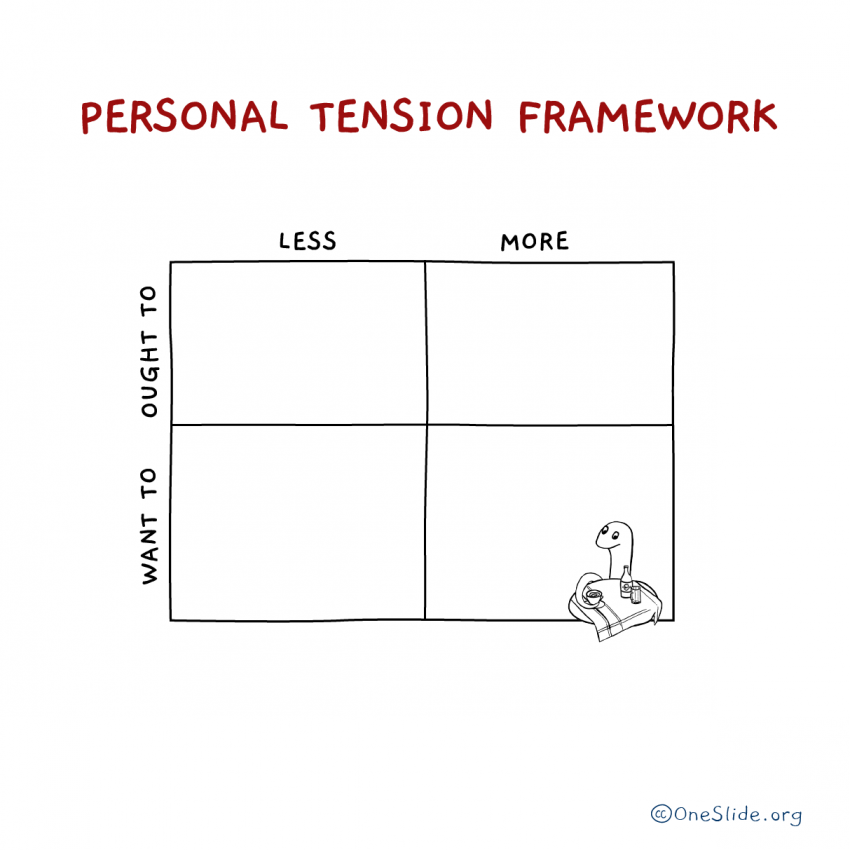Editable Google Slide (CC-BY-4.0)
Many of the people we know (including ourselves) often experience tension between what they want to do and what they ought to do. Listing these things on a piece of paper side by side is an interesting thing to do. While going through this exercise we noticed that a lot of the items had words “more” or “less”. Like “ought to exercise more” or “want to work less”.
So why don’t we combine “want to vs. ought to” and “less vs. more” into a framework like the one you see above?
You can put it in a form of a table (like the one above) or a graph (which would allow you to add degrees: “way more” or “a “little bit more”). Items that you put inside can be activities, brands, URLs, people… anything.
As you start putting things in, you’ll see that the same thing will often appear in two (opposite) cells of the table: “I want to drink more beer” but at the same time “I ought to drink less beer”. That’s where you find tension, a dissonance between what you believe is good for you and what will give you some instant gratification.
Situations where you find the same item in the two different rows of the same column are also possible. Like “I want to sleep more” and “I ought to sleep more”. This marks a tension of a different type: a tension of priorities. You think that it’s good for you to do it and you enjoy doing it, but due to the limited amount of time you have, prioritizing doesn’t allow you to do enough of it.
We find this framework quite interesting and useful in defining personal tensions.
Defining personal tensions can hopefully lead us (marketers) to powerful questions, great insights, and powerful ideas.
